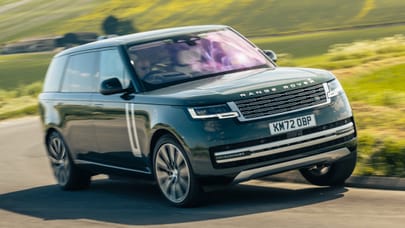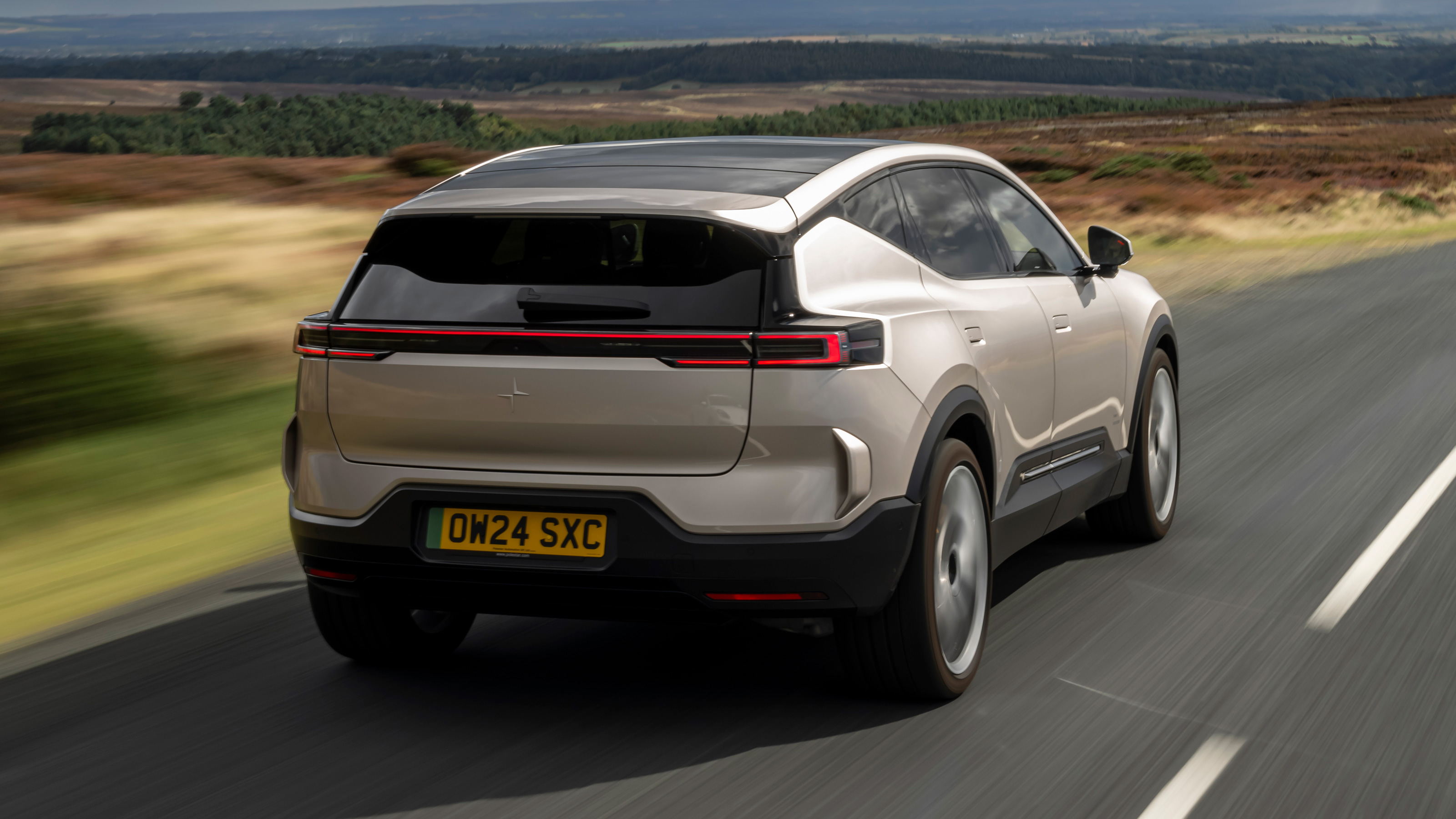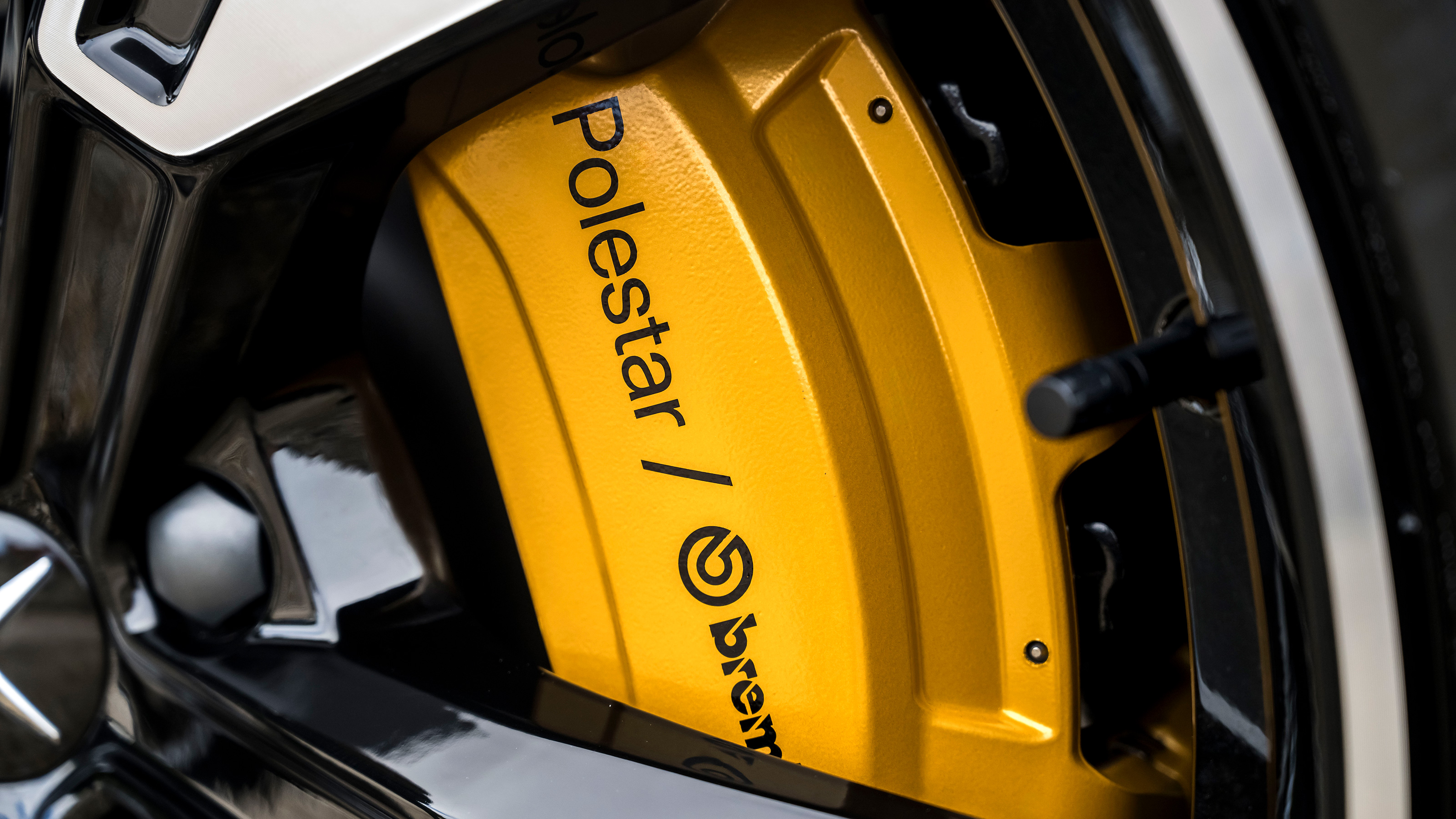
Good stuff
Looks good, drives well, is spacious (for people and their stuff)
Bad stuff
The screen interface is extremely hostile to on-the-go operation, and there are almost no buttons
Overview
What is it?
A five-seat, full-size pure electric SUV from Polestar. That nameplate is Chinese-owned and Chinese-built. But it's Swedish-headquartered and likes to think of its design and ethic as Scandi. It's actually part of the Geely Group, like Volvo and Lotus.
For size, power and position, think BMW iX and Jaguar's departing I-Pace. It feels properly premium and rocks tonnes of kit, wrapped in some really quite expressive styling. The sleek, lowish roofline and crisp, clean surfaces remove it from the brash look of established fast-petrol SUV players. So does its minimalist cabin (in good and bad ways).
It's a fairly low-drag shape too, and has some subtle touches to further that, including an S-duct in the bonnet like an I-Pace.
Initially we’re looking at ‘Launch Edition’ cars, both dual-motor all-wheel drive, both with a 107kWh useable battery. The long wheelbase isn't just for style. It leaves lots of room for people and the big battery beneath.
In the launch range, both cars have dual motors. The ‘base’ is the Long Range Dual Motor from just under £76k, the slightly quicker one the Long Range Dual Motor Performance Pack which gets a mild power/torque bump and some extra ‘Swedish gold’ bits for £4,600 more. That’s 390 miles of WLTP range for the LRDM, 348 for the Performance Pack.
Soon there'll be a version minus the front motor, at £69,900.
What are you actually getting?
Polestar started as Volvo’s funkier cousin, and the Polestar 1 and Polestar 2 were rebadged stillborn Volvo designs. Now they've moved apart a bit, but even so the common ownership brings the SPA2 (scalable product architecture) platform also used in Volvo’s EX90. It's a bespoke EV set of bones, but the sleek 3 comes as a five-seat only where the EX90 is a seven-seater.
The - mostly recycled - interior is techy, spacious and lovely, the driving experience rapid but calm. There’s proper torque vectoring plus air suspension, adaptive damping and loads of advanced driver assistance. Also lots of space.
Polestar. Comes across as lightly sporty and eco-conscious. Is this more of the same?
A little more than that. The 3 might be a full-size SUV, but it doesn’t present as particularly in-your-face or blocky. The roofline is low (1,614mm), and it’s simply not a threatening car. It’s long and decently wide, but not imposing.
For substance behind the poetic claims, Polestar publishes well-audited declarations of the manufacturing CO2 footprint of its cars. The 3 is under 25 tonnes CO2-equivalent, which means on UK electricity it'll probably repay its manufacturing debt versus a big petrol SUV in less than two years' driving.
How does it drive?
It feels lighter and more sprightly in turns than most big SUVs do, even in gentle driving. Turn up the wick, as all that power allows you to, and it doesn't go to pieces. That torque-vectoring rear drive really does pivot it through and out of a corner with little apparent effort.
It’s also not slow; both of the launch versions crack 5.0 seconds for a 0-62mph jolt. That’s rapid for a big, 2.6-tonne SUV thing. Despite air suspension, the ride is a little on the firm side, so it doesn't fully resolve the calm/sporty dichotomy.
What's the verdict?
As Polestar's first car designed by the brand team not inherited from Volvo, this could have felty like a discontinuity. But actually it has the feel of a natural progression from the 2, a car we like.
There’s calm and considered exterior design, excellent physical build quality, and conscious and thoughtful manufacture. No, a 2.6-tonne electric SUV isn’t going to save the environment, but if it has to exist, you might as well be careful about how you do it. Anyway, it's far better over a lifetime than the combustion equivalent.
Inside it generally feels expertly premium without being flashy or overblown. Design is the thing that'll hook buyers in. It also drives with a kind of calm authority which many people will appreciate; long-legged and comfy, but perfectly capable should you wish to go faster. Again, not necessary for a big SUV, but welcome.
But you must try the interface before you buy. If you're content to set a satnav destination and listen to music, well fine. But if you tend to switch dynamic and assist systems according to the road, or alter sound according to the music, you'll find the menu-based systems wildly frustrating. As we did.
So all-in the 3 is a fresh and a solid effort from Polestar, and one you could try if the usual brands are beginning to grate.
The Rivals
Trending this week
- Car Review
BMW iX3








